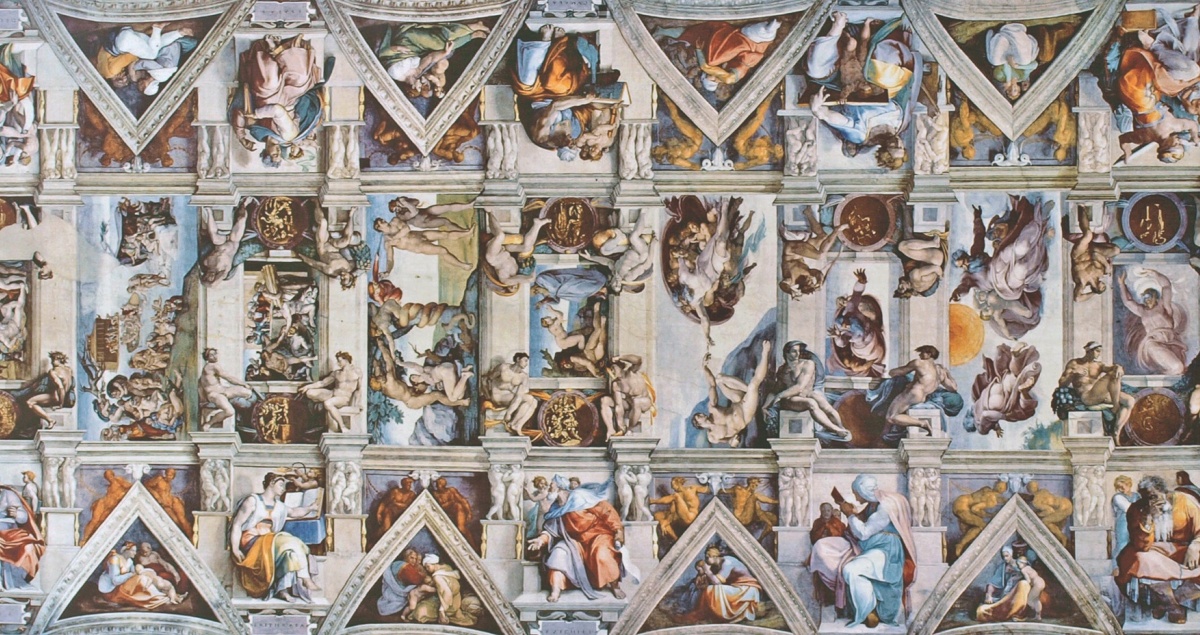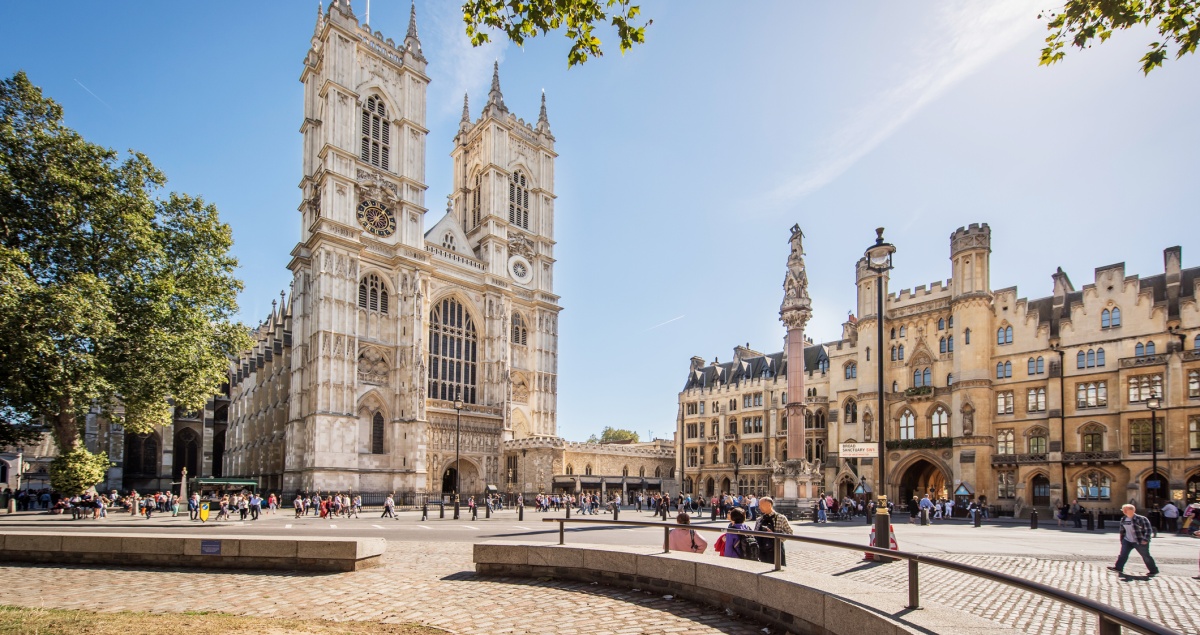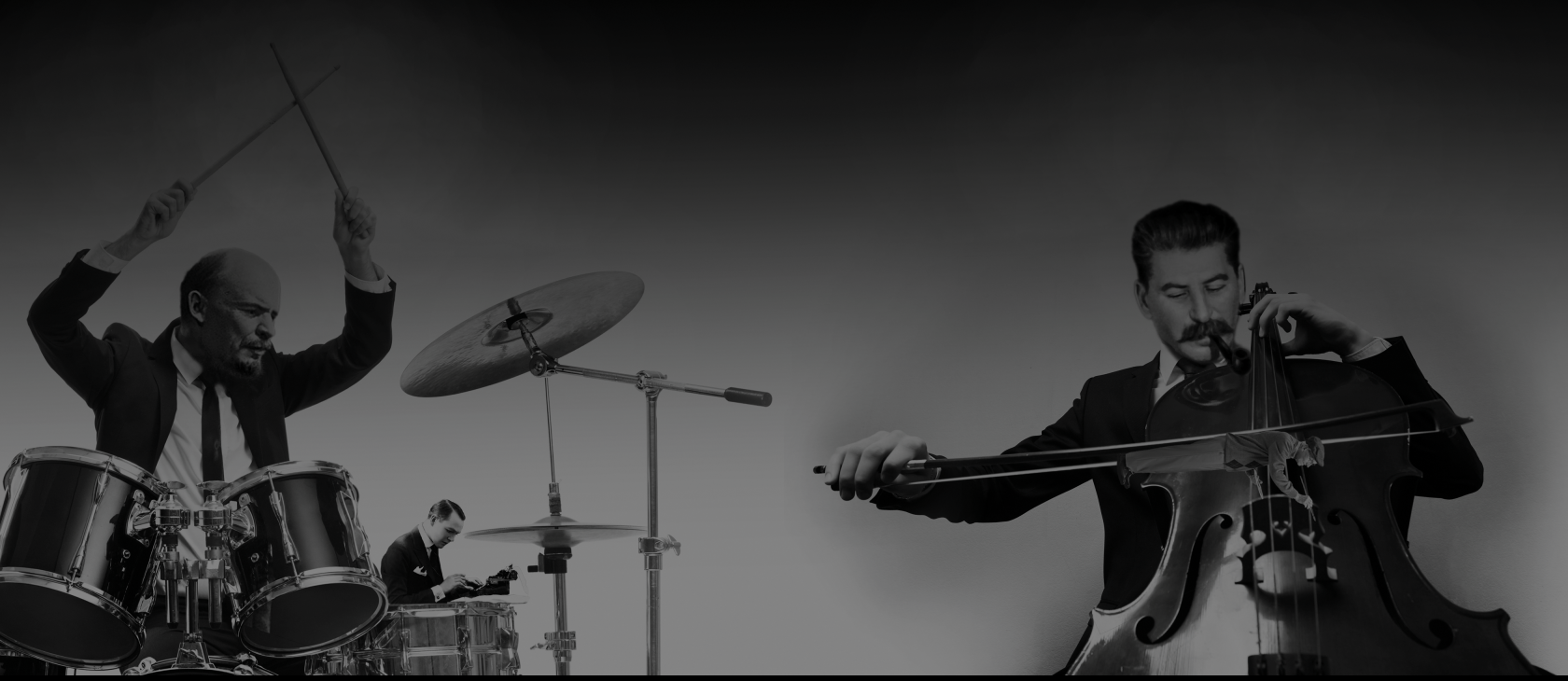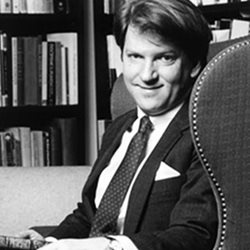We don’t have a lot of good ways to judge what makes an art important to civilization. Sales and popularity are generally insufficient guides: We intuitively know that Michelangelo produced superior art, regardless of how many copies of Robert Indiana’s 1960s pop-art Love image were sold. (You can’t escape knowing it: a pair of stacked letters, with the O titled so it looks as though the L were kicking it, in saturated red, green, and blue taken from old gas-station advertisements.) Or, for that matter, Farrah Fawcett’s 1976 red-swimsuit picture, which is often said to be the bestselling poster (and thus, by one definition, the bestselling reproduced artwork) of all time.
Words fail us because everything has become political, some kind of propaganda, either ingested or invented, and great art no longer matters because what it means to be human no longer matters. And yet, old churches still arrest our gaze and stories still need to be told.
Or think of music. Edgar Allan Poe curiously remarked in 1849, “There are few cases in which mere popularity should be considered a proper test of merit, but the case of song-writing is, I think, one of the few.” Perhaps it’s fortunate that he didn’t live to hear 1970s AM radio, spared a decade that made No. 1 hits of Chuck Berry’s “My Ding-a-Ling” (1972), Paul Anka’s “Having My Baby” (1974), the Starland Vocal Band’s “Afternoon Delight” (1976), and Rupert Holmes’s piña colada song (1979). However we judge, say, Beethoven’s Ninth Symphony, in just about everyone’s estimation it finishes ahead of the Captain & Tennille’s “Muskrat Love”—a 1976 radio hit about muskrats nibblin’ on bacon and chewin’ on cheese while having muskrat sex: “Anything goes as they wiggle, / and Sue starts to giggle.”
Still, there is one rough-and-ready way to gauge the place held by certain arts and cultural activities: Through most of the twentieth century, we knew an enterprise mattered if the Soviet Union invested time, money, and tyrannical brutality into trying to be the best in the world at it.
That’s an imperfect measure, of course. The cultural products produced entirely from individual genius aren’t fully susceptible to state manipulation, even if the Soviets agreed that they mattered. Worse, the individual geniuses of those arts had a regrettable tendency to deviate from the party line. Think of the novel as an art form. There’s a limit to readers’ willingness to accept the relentless political messaging in, say, Yuri Krymov’s 1938 The Tanker “Derbent” or Nikolai Ostrovsky’s 1936 How the Steel Was Tempered—and those two novels were among the best of the socialist-tinged social realism demanded by the Soviet literary censors. The misadventures of the likes of Boris Pasternak and Aleksandr Solzhenitsyn seemed common enough that the USSR always felt uneasy about fiction writers. And poets. And anyone working alone.
But some things could be pushed along by group effort, by investing in coaches, and by grabbing the talented when very young and immuring them in state-run training schools. Ballet, for example. Chess. Playing the violin and piano and cello—the instruments of classical music. Olympic sports. Even painting and sculpture. Opera, for that matter. The Italian and German librettos of most previously acknowledged great operas made it a more problematic art form, but the USSR was full of attempts at operatic greatness. Tikhon Khrennikov—longtime head of the Union of Soviet Composers—composed such works as the 1939 Into the Storm (based on a novel by the most lickspittle of party lackies, Nikolai Virta), and Dmitry Kabalevsky created the 1938 Colas Breugnon, to say nothing of operas by such genuinely good composers as Sergei Prokofiev and Dmitri Shostakovich.
In the West, the Soviet efforts at culture made unlikely Cold War heroes out of the likes of Van Cliburn at the piano and Bobby Fischer at the chessboard—but even that odd duo managed to show the broad agreement, on both sides of the Iron Curtain, about what constituted the classic work of Western civilization.
When world-historical artistic geniuses appear, there has to be a ground on which they can flourish. Otherwise they simply never produce the art that manifests their genius, and they slip away unremembered.
Perhaps we could make the case that the Cold War lent a moral seriousness to the politics of the West: For all the silliness of the 1960s and 1970s, even as ameliorative a personality as Jimmy Carter came at last to see that the struggle against the USSR was real. And similarly, we could make the case that the Cold War lent a cultural seriousness to the traditional arts of civilization. The Soviets needed great ballet dancers and symphony orchestras so they could demonstrate to the world that the cultural deposit of civilization had gone with them down the path of communism. The West needed great opera halls and Shakespeare companies to insist that civilization continued best under the freedoms of democratic capitalism.
The Cold War ended long ago, of course. Andrei Gromyko and John Foster Dulles share the darkness. Khrushchev and Eisenhower are no more. And perhaps not coincidentally, the traditional arts have, in the long years since, slid down into near terminal decline. A standard list of good operas from the 20th century includes Igor Stravinsky’s The Rake’s Progress, Benjamin Britten’s Turn of the Screw, and Aaron Copland’s The Tender Land—all from the 1950s. And what did the post-Soviet world give us? Alfred Schnittke’s 1992 Life with an Idiot, maybe, or Karlheinz Stockhausen’s 1998 The Light Operas, but they don’t have much cultural resonance—or harmonic resonance, for that matter.
As in opera, so in all the other old cultural activities. Name a traditional art, something rooted in the ancient practices of the civilization, from painting to poetry. And, as a general rule, the last truly world-significant example you can name in that will probably be no more recent than the 1950s. Certainly from sometime before the 1990s. Something went out of us in the dying fall of the Soviet Union. The balloon deflated with the sad, flatulent sound of, say, a Philip Glass composition.
A balloon might be the exact metaphor, for even while the struggle against the Soviets kept the traditional arts alive, it also kept them artificially inflated. They were ready to fail for any number of reasons, and when the end of the Cold War loosened the knot, those arts dissipated into the air with a speed possible only for the synthetically maintained. The 1960s and 1970s already contained the promise of the demise of the cultural consensus—the middlebrow agreement that the arts mattered to education in shared knowledge. The theater critic Terry Teachout once conceived the idea of asking critics in various artistic disciplines to name the great modern works of their field—dance, symphony, sculpture, painting, poetry, novels—and not a single answer he received was from after the first decades of the twentieth century. So why were our arts declining, long before the collapse of the Soviet Union allowed them to fail?
The answer isn’t aesthetic. True genius comes where it will, and no culture is going to create a Shakespeare simply by its cultural conditions. A culture can prevent a Shakespeare, however: When world-historical artistic geniuses appear, there has to be a ground on which they can flourish. Otherwise they simply never produce the art that manifests their genius, and they slip away unremembered.
And what we have been missing for nearly a century is such a ground. Our artists are probably as talented, in some sense, as the artists of any age. But they cannot bring their work to the kind of flower that even, say, second-tier composers could in the high ages of classical music. We do not have an aesthetic problem but a cultural one: We have lost the shared agreement of artist and audience that certain arts matter. We lack a shared metaphysics by which to explain art.

“Beauty cannot be loved fruitfully if it is loved only for the pleasures it gives,” Marcel Proust once wrote. “Aesthetic pleasure is a mere by-product which comes to us if we love beauty for itself, as something real which exists outside ourselves and is infinitely more important than the joy it gives us.” Only if beauty is real, he realizes, can we have joy in it—and, by implication, make beautiful art.
We could go back to Matthew Arnold’s attempt to substitute high art for what he perceived as the receding sea of faith—where we seek out “the best that is known and thought in the world.” It is this that, in some sense, gave us the middlebrow assumptions of the 1950s about the Great Books and the Great Composers and the Great Artworks. But it was a fragile, insubstantial notion, and it gave us as well the subsequent sneer at it all as snobbery and pretentiousness. The modern crisis of art is essentially that we do not know as a culture what we want or what our purpose is. We no longer believe that there exists a real order, beyond ourselves, of the true and false, good and bad, right and wrong.
That’s not to say that the cultural sharing of a metaphysics, a sense of reality, meant unremitting chauvinism about the culture. In my 2020 book, The Decline of the Novel, I pointed out that, for almost 300 years, the novel was a major art form, perhaps the major art form, of the modern world—the device by which, more than any other, we tried to explain ourselves to ourselves.
And as an art form, the novel—from its High Victorian peak through its full modernist ambition—was often engaged in brutal criticism of the culture in which it appeared. But that criticism of the culture’s present proceeded from a curious lack of criticism about the possibilities of the culture’s future. The novel generally contained what we might call a confident critique, born from an assumption of strength and worthiness—born, most of all, from an assumption of access to the great truths of morality and the structures of the universe by which we could find a guide.
In the absence of a sense of a supernatural order, the only external reality that can be seen is the political.
In other words, the sins of Western culture could be criticized in the highest tones of moral outrage because few readers doubted that Western culture was called to something higher. Our failures could be mocked with the most vicious comedy because those failures were perceived as actually failures, as authors and their readers alike knew. Confidence in the general frame of culture allowed a useful, socially advancing complaint about the ill-fit and corrupt elements held within that frame. The novel was a device for understanding and improving ourselves within an accepted cultural setting of belief in the possibility of understanding and improvement. And when we turned, as many artists did, to an unconfident critique, criticism of the setting itself—when we turned, as many artists did, to a desire to smash the frame—the novel in its social aspect ceased to be as useful as it had once seemed.
All this is testimony, I think, to the current problem of culture’s lack of belief in itself, derived from the fading of a temporal horizon. As I said in The Decline of the Novel, we walk with our heads down. History appears to have no discernable aim, and culture no visible end. Without a sense of the old goals and reasons—a sense of the good achieved, understood as progress—all that remains are the crimes the culture committed in the past to get where it is now. Uncompensated by achievement, unexplained by purpose, these unameliorated sins must seem overwhelming: the very definition of the culture. For that matter, without a sense of the old goals and reasons, why should we strain for the future? Why, indeed, should we write or even read book-length fiction for insight into the directions of the culture and the self?
And so, generally speaking, we don’t bother much with those books anymore. We don’t teach them in college in any systematic way. We don’t expect that even the educated will have a sure sense of the form. The local libraries have given up on acting as repositories of literary history, moving a few copies of Dickens and Hemingway to the “Young Adults” section and pulping the rest. Although their positions in universities derive from the prestige that literature once possessed, literary scholars now study, for example, the dated pornography of naughty French postcards with the same tools and the same enthusiasms they once used for the novel; the typical English department in the United States has more professors with a specialty or subspecialty in movies than in anything else.
The newer arts rise and fall faster, lacking the 300 years of the novel or classical music. Television went through something like a new golden age in the early 2000s, but the impetus appears to be dying out. Movies, too. Video games. Comic books and graphic novels. The failure of the culture’s metaphysical sense is killing them off, and in a way that can be easily discerned. In the absence of a sense of a supernatural order, the only external reality that can be seen is the political. Art is always defined by its relation to the real beyond the self. In previous ages, that was a relation to such things as an enduring human nature, God, and beauty. In the current age, the relation is to political causes. All art is political, we’re told—and rightly so. For what else is there?
In many ways, the communists anticipated this. The most fascinating question of the Moscow Show Trials of the 1930s is how some of the accused came to believe in their own guilt, even when they knew they had not committed the acts for which they were accused. As writers from Maurice Merleau-Ponty to Arthur Koestler saw, their confessed guiltiness was not particularized but general: They had become symbols of counter-revolution, and thus their best service to the revolution would be to confess as repentant counter-revolutionaries.
In the summer of 2018, The Nation published “How-To” by a poet named Anders Carlson-Wee. The poem offers advice to panhandlers on the best way to wheedle cash out of the passersby: “If you’re crippled don’t / flaunt it. Let em think they’re good enough / Christians to notice.” The Twitter mob quickly turned on the poem, declaring it offensive in its “ableism” and use of what they claimed was “black voice” by a white poet. Within a month, The Nation had removed the poem from its website and posted in its place an apology and promise to do better from the editors.
The incident was, in some ways, a typical caving of an institution to what it perceived as overwhelming popular anger (though the numbers involved didn’t reach more than a few hundred). The parallel to the Moscow Show Trials came when the poet himself apologized for the poem. The poem had become a lightning rod for complaint about oppression of minorities, and for that he was guilty, even though he had never intended to oppress those minorities. In fact, he thought he was attacking the right object: white Christians with money.

The attacks on Lin-Manuel Miranda’s 2021 film In the Heights and Steven Spielberg’s 2021 remake of West Side Story for being incorrectly diverse: We could come up with hundreds of other examples. And under such conditions, what art can be made? Every such example tightens the screws, making art more anodyne, more repetitive of tropes and images that have avoided attack, more obviously political.
And yet in a political age, there is nothing but politics. We cannot defend a work of art on the grounds that it is beautiful, for beauty is not real outside our perception of it. We cannot defend art on the grounds of deep insight into human nature, for the idea of human nature is only a political construct. We cannot defend art on the grounds of truth, for art is only good or bad if it entertains in politically approved ways and instructs in politically approved lessons.
That’s not to say art today is impossible. In his 1983 sci-fi novel Citadel of the Autarch, Gene Wolfe creates a tour-de-force scene in which a character—allowed to speak only in the official clichés of a totalitarian regime—tells a story. Another character translates it into common speech to reveal the story’s cleverness and pathos, despite its verbal limitations. But we are limited these days, like the storyteller under totalitarians, in what we can say and what we can portray, because we gave up the theological and metaphysical foundations of culture. Our art didn’t fail us. We failed our art.
No matter how much the world beyond the self is believed to be only the power structures of politics, eternal truths remain real beyond the political.
And yet, like weeds that claw a thin existence in the crevices between slabs of concrete paving, genuine art will always find a way to live. Human nature is not eradicated by the attempt to deny it. The truth of beauty will not be erased from the cosmos by redefinition. The divine cannot be slain by the willful refusal to perceive it. No matter how much the world beyond the self is believed to be only the power structures of politics, eternal truths remain real beyond the political.
This is the turn Philip Larkin makes at the end of “Church Going”—the poem in which he perceives the end of British Christendom and the emptiness of British churches, only to realize of the church at which he stopped:
A serious house on serious earth it is,…
And that much never can be obsolete,
Since someone will forever be surprising
A hunger in himself to be more serious.
Talent is constant, or nearly so, in every age, but talent can produce genuine art because some human beings discover in themselves a desire to be more serious—to see deeper into the ineluctable facts that we die, that babies are born, that the world lies in sin, that beauty is real.
As Leo Strauss saw in his 1952 Persecution and the Art of Writing, other ages lived under intellectual and social regimes that controlled tightly what could and could not be said. Ours is not nearly the worst in physical persecution, although it may be unique in redefining everything as political, which requires that the public close its eyes in holy dread to larger swaths of reality than any culture has ever done before.
Still, the writers of other ages found, in Strauss’ famous terms, esoteric ways to put their dangerous ideas in exoteric publications. And so may we, hinting at what lies beyond politics—until the culture is ready to hear the truth, shouted in great works of art, once again.




